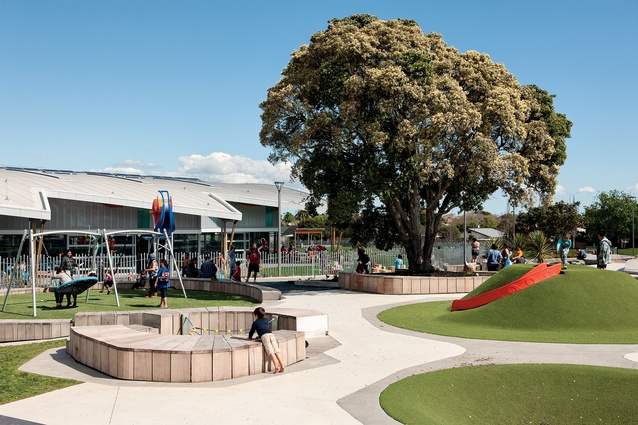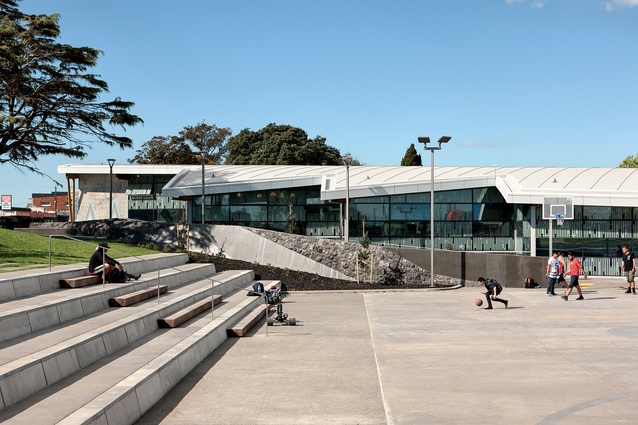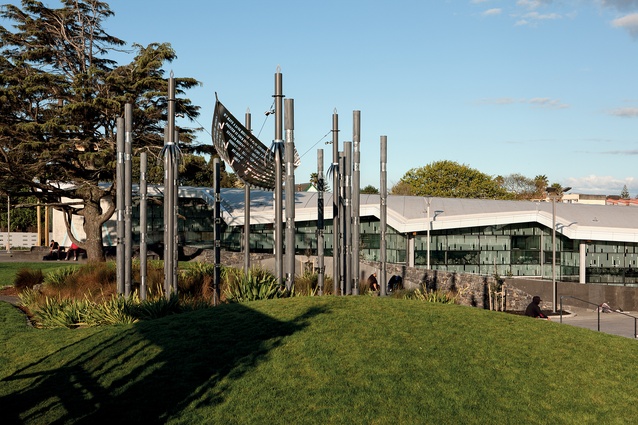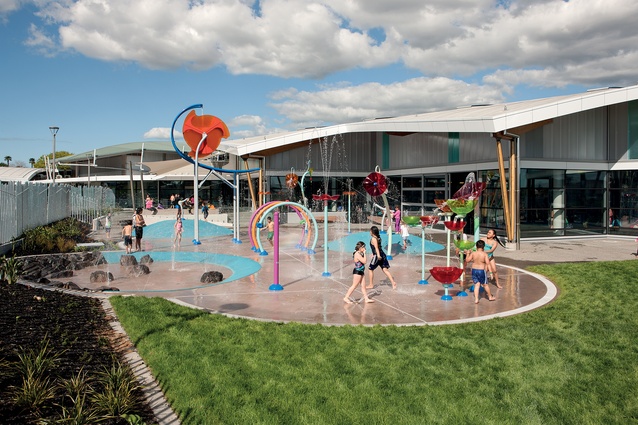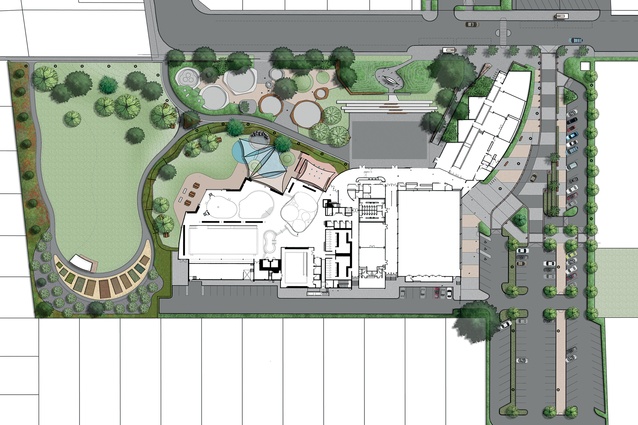Toia – Otahuhu Recreation Precinct
Tucked between Mason Avenue and Nikau Avenue in Otahuhu, the Otahuhu Leisure Centre and adjacent Fairburn Reserve had been victims of benign neglect for many years. Occasional upgrades to the facilities and landscaping seemed like stop-gap measures, always falling short of a universal solution. Under-functioning open space and a cluster of homes on Mason Avenue separated a small children’s playground from the leisure centre and library.
Bounded by houses, cut off from the street and poorly lit, much of Fairburn Reserve had become a liability. In 2013, after over a decade of community lobbying, Auckland Council approved a plan by Creative Spaces, Bespoke Landscape Architects and Isthmus that would maximise the potential of the large site, and bring real benefit to the surrounding area with the addition of an aquatic centre and an expansion of the Otahuhu Library.
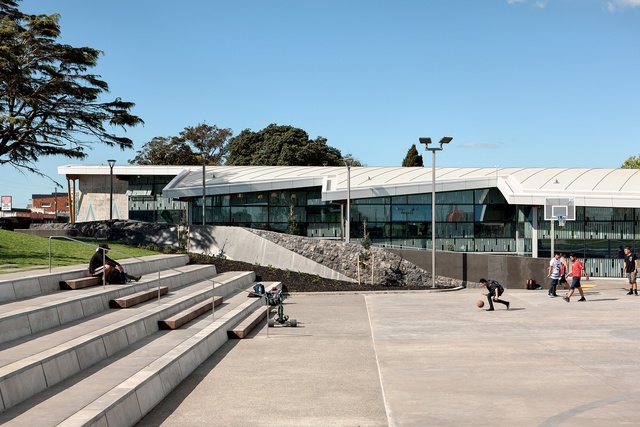
A holistic approach to the relationship between the outside spaces and the built environment was key. Landscape architect Lee Brazier of Bespoke says the idea was that the precinct would be a destination for a proper family day out, not just a couple hours spent at the local pool. To this end, the new buildings merge easily with each other and the outdoor play spaces, which then flow seamlessly into the wider landscape.
“This was always going to be a group of buildings in a park-like setting. The architecture of the buildings – the walls of glass, the poles supporting a solid roof – is indicative of that strong, on-going relationship with the natural environment.”
A comprehensive approach to activating the entire site came out of consultation with local stakeholders. The community very much wanted to keep a park-like environment so substantial open space is still present. Now, a fitness track encircles the reserve, while thoughtful landscaping makes the space conducive to informal sports and encourages family picnics.
Because it’s better connected to the neighbourhood, the reserve is more amenable to market days, large family or social gatherings and community events. The farthest end (once the ‘Achilles’ heel’ of the landscape, says Brazier) is anchored by a shared community garden and orchard; a covered shelter does double-duty as a performance stage.
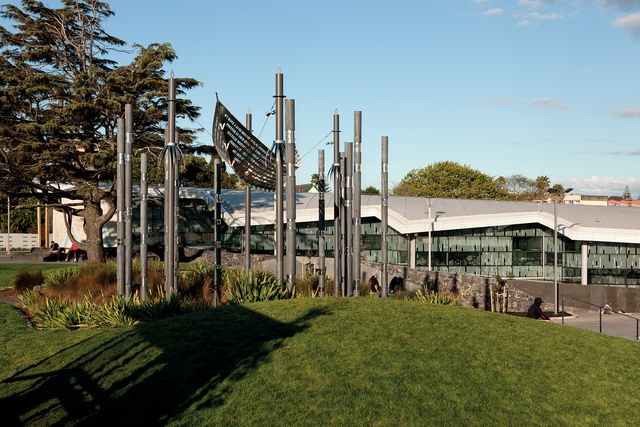
Closer to the expanded recreation centre and library, surrounded by stadium-style terraced seating and accessible by a wide ramp, the outdoor basketball courts can also be used as space for civic events. The David Lange Memorial overlooks the paved space. An existing mix of native plant species that edged the memorial was expanded and upgraded, to increase the level of enclosure and provide some separation from the nearby playspace.
Mixed shade trees have been placed around the park perimeter, and grassy areas interspersed amongst the play spaces. Benches, tables and other seating options are integrated to enable adults to watch over children as they move from one playspace to another.
Inspired by the form of extinct volcanoes, a series of ‘play craters’ provide creative play opportunities for a range of ages. Each crater contains a specific play element, and the crater edges and surface are designed to be playable. The adjacent splashpad design provides direct correlation to the crater theme of the playground, with circular forms dividing differently themed areas of play.
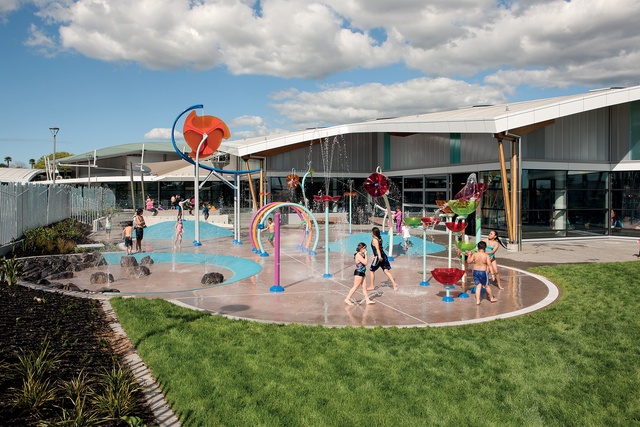
The main vehicular and pedestrian entrances to the precinct sit between Mason and Hall Avenues. A strong pedestrian path through the carpark, now lined with planted beds and benches, gives this previously barren expanse a sense of cohesion and places a priority on pedestrian use.
Just as the overall site plan developed after in-depth consultation with local stakeholders, with the goal of facilitating wide public engagement, Brazier says the planting selection equally reflects the diversity of the Otahuhu community, and the Maori and Pacifica heritage of many residents.
“We selected tropical, Pacific-region grasses and shrubs to add another layer of meaning. This precinct couldn’t have been designed without the local culture in mind. To truly become a community space, it needs to reflect the community.”

